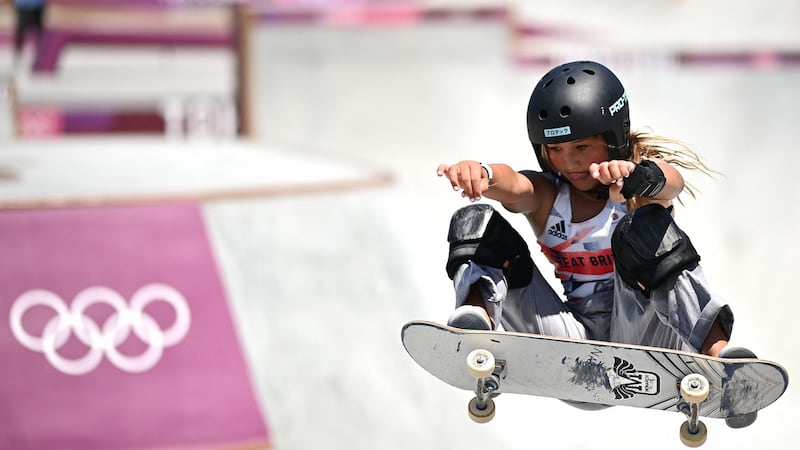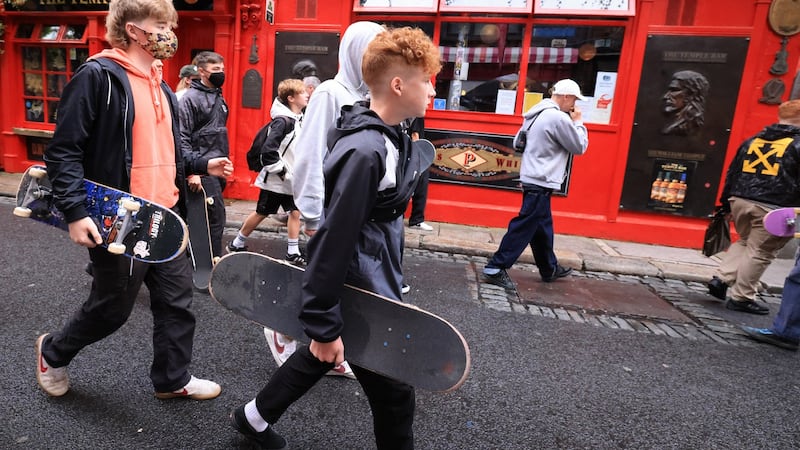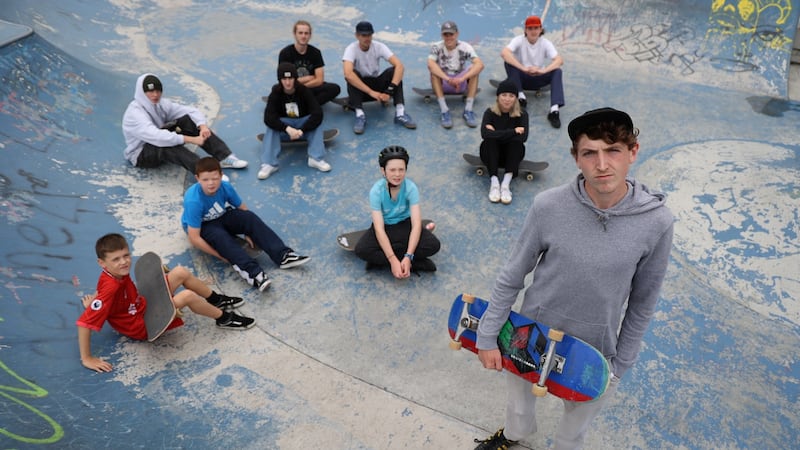In the past fortnight, skateboarding has come out of city parks and streets and into the living rooms of the world, with the Olympics leaving viewers mesmerised by the skill, athleticism and youth of the competitors.
Above all else, it is a sport for the young. Kokona Hiraki of Japan, aged 12, and Sky Brown of Britain, aged 13, won the silver and bronze medals in Wednesday's park skateboard competition. The gold was won by a 19 year old.

Meanwhile, in the women’s street skateboard competition, held in the Ariake Urban Sport Park, Momiji Nishiya won gold, aged just 13. Silver and bronze were won by 13-year-old and 16-year-old skaters.
TV viewers became acquainted with the argot of skateboarding – backside ollie, noseslide, 50:50 grind, but mostly with the incredible spectacle of skateboards that seem to defy the laws of gravity.
Yet still competitors in Tokyo have had to put up with "skating banned" signs beside the skate park where they are competing, illustrating the intolerance many skateboarders feel is shown to them by city authorities everywhere.
In Dublin, meanwhile, there is Temple Bar, where twice in the past 10 days hundreds of skateboarders have protested outside the Temple Bar pub, following an altercation between pub security staff and two teenage skateboarders.

The protests were notable for a few points: the youth of those present, some as young as 12; their multinational profile; and their garb – hoodies, back-to-front caps, baggy jeans and skateboards which they rattled off the cobblestones in Temple Bar to make their point.
Their demands were modest. “Come out and say sorry,” they chanted in unison. It was, as some people observed on social media, the politest protest one will ever see. So far there has been no apology or explanation from the pub.
For many of those gathered, it was not the details of the incident itself that mattered, but rather a generalised grievance that they are misunderstood: “All we do is look after our own. Not one of us would hurt anyone. All we want to do is land that trick and move on,” one says.
Many complain that skateboarders are looked on with suspicion by the wider community on the basis of the time-honoured observation that teenagers loitering about in city parks must be up to no good.
Evan Fogarty (24), who organised the protests, says they have shown the skateboarding community at its best. Skateboarders can seem intimidating, he says: "[But] if they ever stopped the kids and talked to them, you would realise that they are all well-spoken young people."
Skateboarding has been in Ireland since the 1970s. "Skateboarding is not a craze or a childish whim though thousands of Irish children will be practising it after Christmas," Nell McCafferty wrote in The Irish Times in 1977.
Nevertheless, it took until 2006 before Ireland got its first skate park in Bushy Park in Terenure. Today, there are about 85, according to Clive Rowan who has run a skateboard shop in Dublin for 43 years.
He set up Clive's on Hill Street in Dublin in 1978. A 2014 documentary, Hill Street, tracing skateboarding's beginnings in the Ireland of the grim 1980s featured Tony Hawk, the most famous skateboarder in the world.
Rowan remembers that many believed Dublin City Council was wasting money in Bushy Park on a "passing fad that will be gone in a month". Yet, it is still there, still used.

Every Irish town should have a skate park, he says. Cities should have an indoor park to cope with the weather. It is a relatively small investment for a big return, he says.
“For many skaters it is a way out of the mundane,” he says. “Life can be a bit boring. It gives them something to do, improves their body and their mind, and has saved a lot of young people from other things.”
The Tokyo Olympics have demonstrated that skateboards are not a “kid’s toy. It has given us respectability and credibility with the general public,” Rowan says.
What has changed in the years since? Half of his customers are now girls, he says. Young women were conspicuous by their presence at the Temple Bar protest.
One of them, Aoife Kehoe (17), says she took up skateboarding six months ago during the pandemic, because it is, she says, a relatively safe and fun thing for her to do.
“Gradually, you see more girls coming to the parks. That’s when you see people who look like you and who are like you doing what you want to do. There’s an influx of even more women now,” she says.
“I am hoping because of the exposure of women’s skateboarding in the Olympics, it will lead to an even greater influx of women,” Kehoe says.
It's not even a joke like I'm probably the only skater in the whole f***ing county, more or less
Social media and YouTube have helped to give Irish skateboarders a profile far beyond Ireland. Ireland's pre-eminent skateboarder, Jamie Griffin, who is from Donegal but based in London, has 350,000 followers on Instagram.
In a recent interview he lamented the lack of skating facilities in rural Ireland and said of Donegal: “It’s not even a joke like I’m probably the only skater in the whole f***ing county, more or less.”
Another well-known Irish skateboarder is Davey Murphy from Cork who first came to public prominence when a video showing him skating down Patrick’s Hill, one of the steepest hills in the city, went viral.
Now 20, he became a professional skateboarder in the United States until an Achilles tendon injury curtailed his prospects. An All-Ireland champion at 15, he hopes to compete in the Paris Olympics in 2024: "I hope in body and mind to be ready to compete for Ireland," he says.
He got sponsorship deals in the United States on the back of some video footage that he posted online. “I would not have been discovered otherwise,” he admits.
Competitive skateboarders are distinguished by their consistency, he explains, repeating the same action until they get it right and can post it on Instagram.
Too many skate parks, he says, are used by drug addicts or mothers with toddlers, neither of whom belong there. Every skateboarder has the same complaints, while all agree, too, about the need for indoor venues.
The skateboarders who agreed to meet The Irish Times in the Cork Street skate park in Dublin were able to do a few tricks before the rain came down again and sent them scurrying for shelter.
The outcome illustrated one of their most consistent demands to the State and local authorities. Skaters need dry weather, or indoor venues. Skateboarding was invented in California for a reason.
In Cork Street, Charlie Carroll (26) took up skateboarding 2½ years ago relatively late in life, because he was looking for something to do that did not involve going to the pub. Now, he believes it is a common denominator that can unite everyone.
During lockdown, it was one of the relatively few safe things to do. “It’s great for your physical and mental health wellbeing. It is something to look forward to. There is a sense of progression with it. It’s like the best video game really, except it is in life.”










